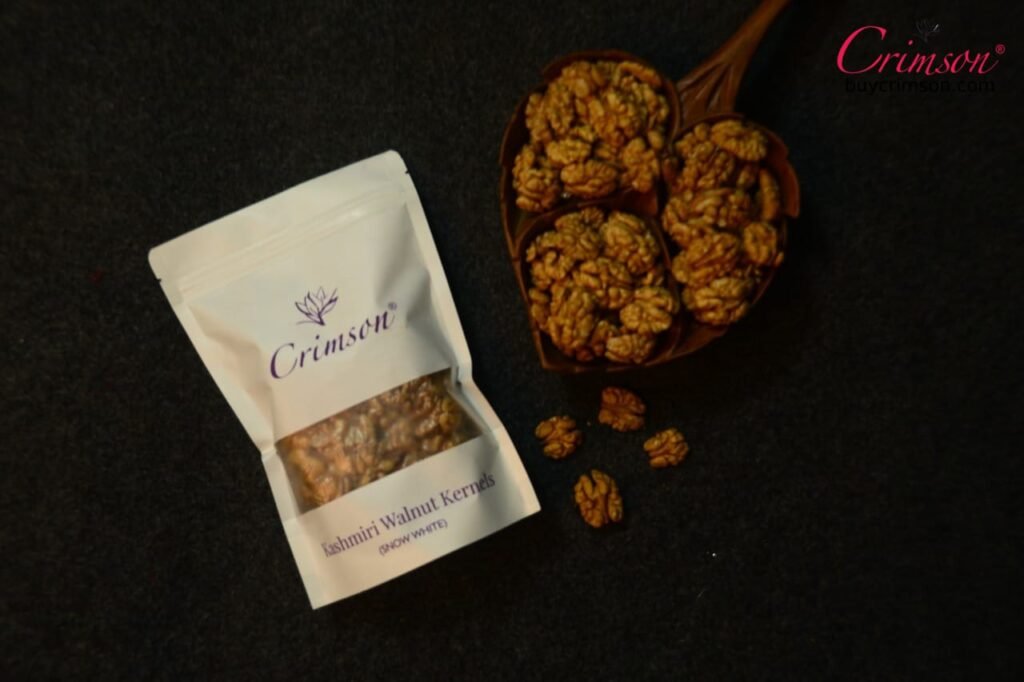Kashmiri walnuts are believed to have originated from Persia and are known all over the world for not only their superior taste and quality but also their high nutritious value and amazing health benefits.
Walnut (Juglans sp.) is a light brown edible seed covered in a shell that belongs to the family Juglandacea and flourishes at an altitude of 900-3000. Kashmiri walnut is locally known as doon. Walnut is commonly known as Akhrot in Hindi, Akhrod in Marathi, Akhara in Gujarati, and Akhrota in Assamese.
What makes Kashmiri walnuts more preferable?
Well, the answer lies within the question they are kashmiri walnuts. Yes, that’s right ! – Blessed with the variations in soil fertility, soil matter, topography and resistance to harsh weather, Kashmir is considered to have the best characteristics for the cultivation of walnuts.
Kashmir, recognized as one of the leading producers of walnuts in not only India but in the entire world contributes to about 98% of the walnut exports from the country. In Kashmir, walnut trees are abundantly grown in the areas of shopian and kupwara. Previously shopian was considered to be the largest walnut growing region in Kashmir. But now, kupwara has overtaken and has become the major contributor of walnuts in the entire state.
Kashmiri walnuts are of high demand in both local and international markets as they’re widely known for their premium quality and flavour. Every year walnuts are packed into cardboard boxes and burlap bags and are sent to various parts of the country. But before this comes a long preparatory process.

Cultivation of walnuts in Kashmir
Walnut trees in Kashmir are mainly propagated using seedlings and take about 13 years to yield their first crop. However, a fully grown walnut tree can produce as high as 120 kg of nuts for about 100 years.
In Kashmir, walnut trees start blooming at the onset of spring season in the month of March to April. The bearing of fruit starts soon after, followed by the hardening of the shell which usually takes the longest time.
As the autumn season sets in, walnut cultivators prepare for the harvest. The harvest begins when the walnuts have matured and a high ratio of nuts on the tree have split hulls. The growers pluck the crop by using mechanical shakers that help remove the nuts from the tree. These nuts are then swept into windrows and collected by the harvest machinery.
The drying process begins after removing the outer green hulls and using wet scrubbers to clean off the shells. In the final step, cleaned walnuts are laid out in an open field for about a week before being packaged and sent to the various parts of the country.

Kashmiri walnuts, or doon, are more than just a dry fruit. They are a symbol of Kashmir’s heritage and unmatched quality. From their unique taste and high nutritional value to their deep cultural and economic importance, Kashmiri walnuts truly stand apart in the global market.
If you’re looking to enjoy the authentic taste of premium Kashmiri walnuts, make sure you choose the right source. At Crimson, we bring handpicked Kashmiri Walnuts and other authentic Kashmiri dry fruits straight from the valley to your doorstep.
